The hot weather brings with it the incentive to divert food scraps from the garbage or green bin before they start stinking. But what to do with the tomato ‘bums’, bread ‘bums’ and other nutritious ‘undesirables’ that the family is reluctant to eat?
1. Brocco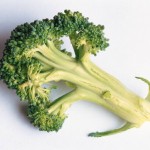 li ‘trunks’: These were my favourite as a kid. My folks chopped them to look like tree-stumps, and cooked them. They taste surprisingly sweet! Alternatively, grate them as you would cabbage or carrots and use them to make a coleslaw. When consumed raw, these are high in vitamin C and sulfur-containing phyto-nutrients like indole-3-carbinol, the latter which supports the liver’s blood purification work.
li ‘trunks’: These were my favourite as a kid. My folks chopped them to look like tree-stumps, and cooked them. They taste surprisingly sweet! Alternatively, grate them as you would cabbage or carrots and use them to make a coleslaw. When consumed raw, these are high in vitamin C and sulfur-containing phyto-nutrients like indole-3-carbinol, the latter which supports the liver’s blood purification work.
2. Bruised or dehydrated fruit: Cut off bruises, moulds, holes (inspect carefully for visitors) from peaches, apples, mangos and oranges and add them to a smoothie. Or, juice them. While nutrient content begins to diminish shortly after harvest, the fibre and flavours remain.
3. Juicer mulch: The next time you make a muffin recipe that calls for wheat bran or flax meal (the latter which should NEVER be heated), replace it with an equivalent portion of your mulch. If you have a juicer, you’ll know that for each glass of fresh juice there is a bucket-full of fibre that goes to the green bin. To get the most liquid out of your fruit and vegetables, run the mulch through the juicer again immediately after collecting it from the receptacle. Keep doing this until the mulch is as dry as you can get it. Then, place the m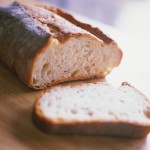 ulch into ice cube trays and freeze until needed for muffins or to add thickness to pureed soups.
ulch into ice cube trays and freeze until needed for muffins or to add thickness to pureed soups.
4. Bread ‘bums’: I have always found it funny that we buy breadcrumbs in a box at the store when we have the raw materials to make them ourselves! Sure, the bums/ends of bread are often drier than the rest of the loaf, but for this reason they make good burger bun-halves! Or, save a few ‘bums’, toast them on a cookie sheet and then crumble for your own bread crumbs.
5. Bones: Your grandparents knew that poultry, beef, pork, and even fish bones (if carefully contained) can be used to make soup broths. Obviously, these will wind up in your compost bin afterwards but why not get some minerals and collagen out of them and into you first?
6. Pickle and sauerkraut juice: If you buy or make your own naturally fermented pickled foods, don’t pour the juice down the drain. It’s a substantial source of beneficial bacteria. Add the juice to your salad dressing for some extra zing and some gut-friendly probiotics.
7. Citrus peels: A citrus zester or microplane grater is a useful tool to have in the kitchen to obtain the highly-flavoured essential oils found in the citrus rind. Add the peel to your baking, and smoothies for an extra kick of citrus! Note: wash rinds thoroughly before zesting, and store unused zest in the fridge.
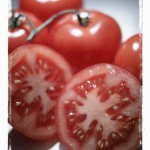 8. Tomato ‘bums’. If you enjoy tomatoes throwing these out is an unforgiveable crime. Bruschetta is one of the world’s easiest and healthiest condiments. Chop some tomatoes, some fresh basil leaves, a clove of garlic and top with some olive oil and voila–you have bruschetta! (I promise: you won’t be able to tell it was made with tomato ‘bums’.)
8. Tomato ‘bums’. If you enjoy tomatoes throwing these out is an unforgiveable crime. Bruschetta is one of the world’s easiest and healthiest condiments. Chop some tomatoes, some fresh basil leaves, a clove of garlic and top with some olive oil and voila–you have bruschetta! (I promise: you won’t be able to tell it was made with tomato ‘bums’.)
9. Squash pulp: Pumpkin, butternut squash, delicata, hubbard,…whatever your favourite squash, it is an excellent source of beta-carotene, an antioxidant. The pulp in the middle will make your muffins wonderfully moist! Use it in place of milk in those recipes. You may need to add a few minutes to the baking time, but it will be worth it! Another bonus is that any change in flavour of your muffins is imperceptible to most people, especially if you add pumpkin spices like clove, nutmeg and cinnamon. Enjoy!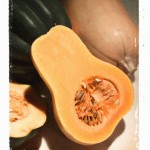
10. Squash seeds: Roast them! For some reason it is easy to forget that although pumpkin is a squash, all other squash contain edible seeds, too. Squash seeds are one of the highest plant sources of zinc and vitamin E. They are also excellent fibre.
What tips or tricks can you add to this list?
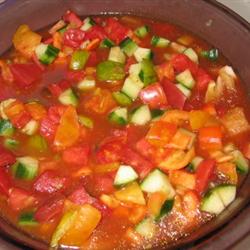
Good tips! We go through so much broccoli and we always throw out the stumps. We’ll have to give that one a try – we probably throw out half by weight. I bet they’d also be good grated in my raw fix salad I make with kale/spinach, sauerkraut, sprouted beans and hemp hearts.
Sounds like a great salad, Jason! You can do the same with cauliflower trunks.
Love the post, thanks for all the great information and helpful tips!
Good tips, and I’m happy to say I do most of those things! Why should you never heat flax meal? So many baking recipes include it, sometimes even as a replacement for eggs.
Hi Kim, while it is true that the consistency of moistened flax meal is similar to raw egg, the omega-3 fatty acids in the flax meal are damaged when heated to baking temperatures. EFAs have three enemies: heat, oxygen and light. When heated, not only are the nutritional benefits of the ground flax seed lost; the oils become oxidized rapidly and are detrimental to health. However, whole flax seed is somewhat more resistant because the oils remain protected from air, which accelerates oxidation. Alternatively, powdered egg replacer, applesauce, silken tofu and squash can work well depending on the recipe type.
excellent tips – i have always used the broccoli stems – peeled so they are more tender and i steam them along with the rest of the broccoli – great alone or topping salads, hot or cold; one of my grandkids only likes the stems of the broccoli – doesn’t like the texture of the tops. Fermented vegetables – i make my own and always “drink” the juice straight up or topping my salad – it IS loaded with good bacteria. wilted/bruised fruits and veggies – if i have more fresh produce than i can consume, i wash & freeze it (even lettuce!) then throw into smoothies or soups! my family knows I DON’T THROW ANYTHING OUT 🙂 food is expensive … especially if you buy good quality organic stuff!.
It sounds like you run an eco-logical and economical kitchen, Josie! Well done.